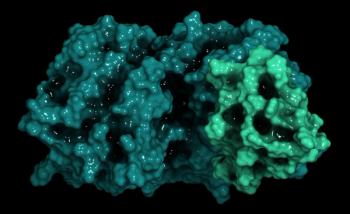
Predicting Cardiotoxicity Before it Happens in Patients with Breast Cancer
Using a very high sensitivity assay analyzing changes in levels of MPO and troponin I before, and 3 months after starting a chemotherapy regimen, investigators were able to predict 46.5% of cases of chemotherapy-associated cardiotoxicity before they occurred.
Using a very high sensitivity assay analyzing changes in levels of MPO and troponin I before, and 3 months after starting a chemotherapy regimen, investigators were able to predict 46.5% of cases of chemotherapy-associated cardiotoxicity before they occurred.
In an article published in the March 2014 issue of the Journal of the American College of Cardiology, Ky et al investigated predictors of cardiotoxicity in 78 patients using anthracyclines, taxanes, and trastuzumab for treatment of breast cancer that tested positive for the HER2 mutation. In the multicenter study, investigators employed ultrasensitive assays for levels of troponin I (the cardiac enzyme released into the bloodstream when the heart is damaged), C-reactive protein (a marker of inflammation), myeloperoxidase (MPO), and several other markers.1
Over a 15-month period, investigators examined patients every 3 months for signs of cardiotoxicity using the Cardiac Review and Evaluation Committee criteria. Between baseline and visit 2, which occurred 3 months later, investigators found that rising MPO levels and troponin I levels were positively and significantly associated with cardiotoxicity, with a 34% increase in the risk of cardiotoxicity with elevations of MPO, and a 38% increase in the risk of cardiotoxicity with elevations of troponin I levels (P = .020, P = .048, respectively). Importantly, due to Bonferroni correction, the cutoff for significance in this situation was P < .02. Even so, MPO levels remained part of the predictive method advocated by investigators.1
Cardiotoxicity occurred in 46.5% of patients with large increases in levels of both MPO (>422.6 picomols per liter) and troponin I (>121.8 micrograms per liter). These results indicate that troponin I and MPO, may be a clinically useful way to prevent cardiotoxicity with anthracycline-based regimens, as well as taxanes- and trastuzumab-containing regimens. Anthracyclines such as doxorubicin, daunorubicin, and epirubicin, are well known for their potential to cause elevations in left-ventricular ejection fraction, which may lead to heart failure and cardiotoxicity.1
Although anthracyclines alone carry some risk of causing cardiotoxicity, when used with trastuzumab the risk increases by a factor of 3 to 5. Previous research indicates that up to 18% of patients have developed cardiac dysfunction while taking combination therapy with trastuzumab and doxorubicin, and 2% to 4% of patients may develop severe heart failure.1-4
Performing MPO and troponin I level testing for patients starting chemotherapy may help prevent the adverse event of cardiotoxicity. However, the expense and inconvenience of performing these tests may also add to the cost of treatment. In another potential limitation, although troponin level testing is available in hospitals, ultrasensitive troponin assays are mainly available to researchers and would not be immediately available to oncologists in the treatment setting. Although further research is required, in the future testing may help prevent cases of heart failure—and offer reassurance to patients who are at low risk for this feared adverse event.1,5
References
- Ky B, Putt M, Sawaya H, et al. Early increases in multiple biomarkers predict subsequent cardiotoxicity in patients with breast cancer treated with Doxorubicin, taxanes, and trastuzumab. J Am Coll Cardiol. 2014;63(8):809-816.
- Seidman A, Hudis C, Pierri MK, et al. Cardiac dysfunction in the trastuzumab clinical trials experience. J Clin Oncol. 2002;20:1215-1221.
- Suter TM, Procter M, van Veldhuisen DJ, et al. Trastuzumab-associated cardiac adverse effects in the Herceptin adjuvant trial. J Clin Oncol. 2007;25:3859-3865.
- Slamon D, Eiermann W, Robert N, et al. Adjuvant trastuzumab in HER2-positive breast cancer. N Engl J Med. 2011;365:1273-1283.
- Clinical Chemistry. High-Sensitivity Troponin Assays. www.aacc.org/publications/clin_chem/Documents/030109Jaffe.pdf. Accessed March 2014.
Newsletter
Stay informed on drug updates, treatment guidelines, and pharmacy practice trends—subscribe to Pharmacy Times for weekly clinical insights.






















































































































































































































